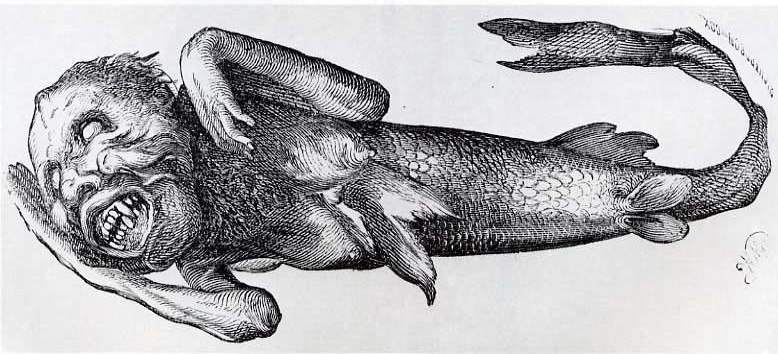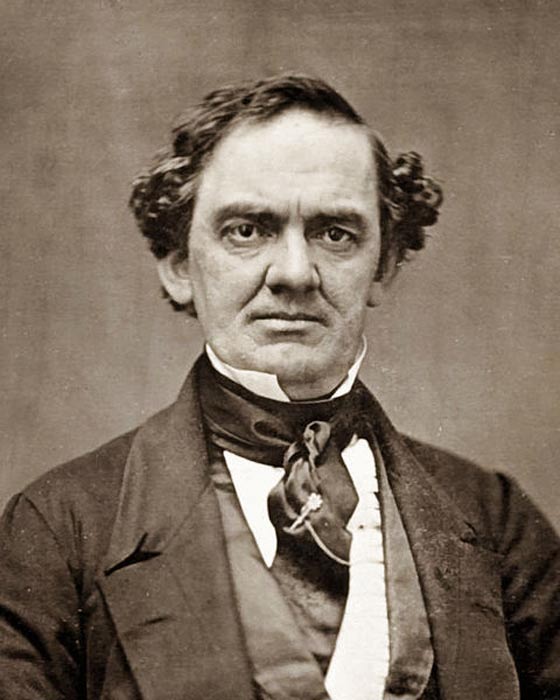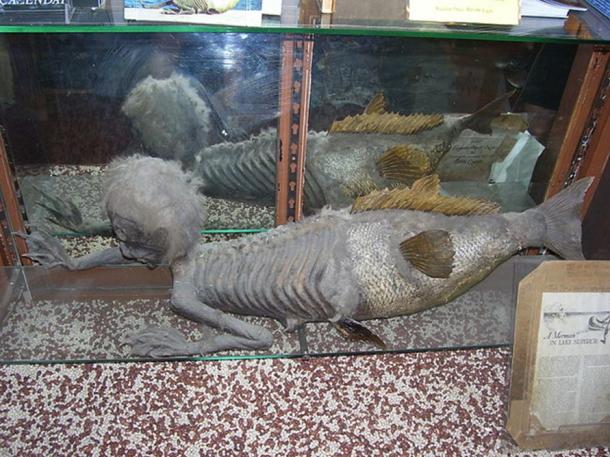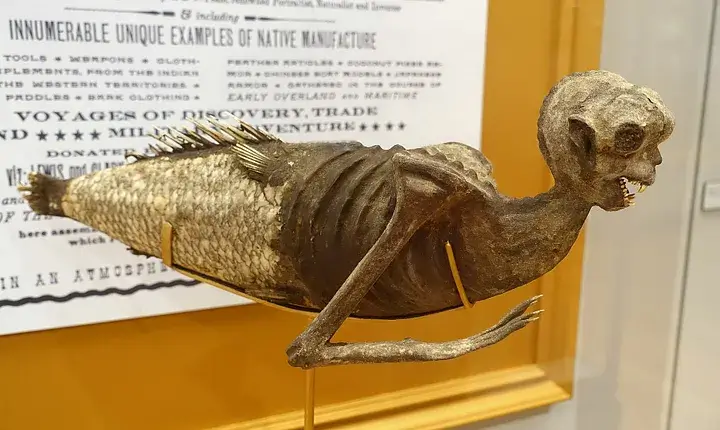The Fiji Mermaid was an infamous hoax during the mid-1800s. The legends of mermaids, whether they are depicted as symbols of beauty or harbingers of doom that lead boats astray, have fascinated mankind for centuries.
This is probably the reason why in 1822, a sea captain from America named Samuel Edes was willing to steal $6,000 of his ship’s hard-earned money.
He wanted to buy a Fiji Mermaid, which he believed to be a real mermaid specimen from the Japanese sailors.
In 1822, $6,000 was worth about as much as $200,000 today, so you’d think that what Edes bought would probably be worth it, right? Wrong.

Edes had been swindled by the Japanese sailors who had actually sold him a hybrid specimen that had the upper body of an orangutan sewn onto the body of a large salmon.
Edes took the Fiji Mermaid to London where he had it displayed, but he never recouped the money he spent on it.
The Fiji Mermaid Hoax
He died believing that the mermaid was real, and he left it to his son after his death. His son sold it to the Boston Museum in 1842.
Shortly thereafter the mermaid caught the attention of none other than PT Barnum, the creator of the Barnum & Bailey Circus.

He was a famous purveyor of curiosities, sideshow attractions, and hoaxes. He let a naturalist examine the mermaid who refuted its authenticity.
Barnum, who was a master at generating public interest, fooled the entire print media with a clever hoax.
He sent fake letters to the newspapers, alluding to a mysterious Dr. Griffin who had allegedly caught a mermaid off of the South American coast.
The doctor wished to keep the mermaid a secret, showing it only to a select few. Intriguing, isn’t it?
The Exhibition

In reality, Dr. Griffin was Levi Lyman, an associate of Barnum and the story about the doctor was a ruse to spark word of mouth and interest in the mermaid.
I guess you could say it was like 19th-century viral marketing. Newspapers also ran woodcuts, some of which depicted beautiful sea maidens that seemed plucked straight out of a fairy tale.
It’s obvious that Barnum had no hang-ups about false advertising. The exhibition took place in New York and was a monumental success.
The mermaid went on to tour the South American region, where it was less successful. Barnum eventually moved on to other endeavors.
Unfortunately in the 1860s, the mermaid is believed to have been destroyed when Barnum’s entire collection caught fire.
But by this point, the concept of the Fiji Mermaid Hoax had become so popular that copycats had sprouted in sideshows and curio shops all over the world.
